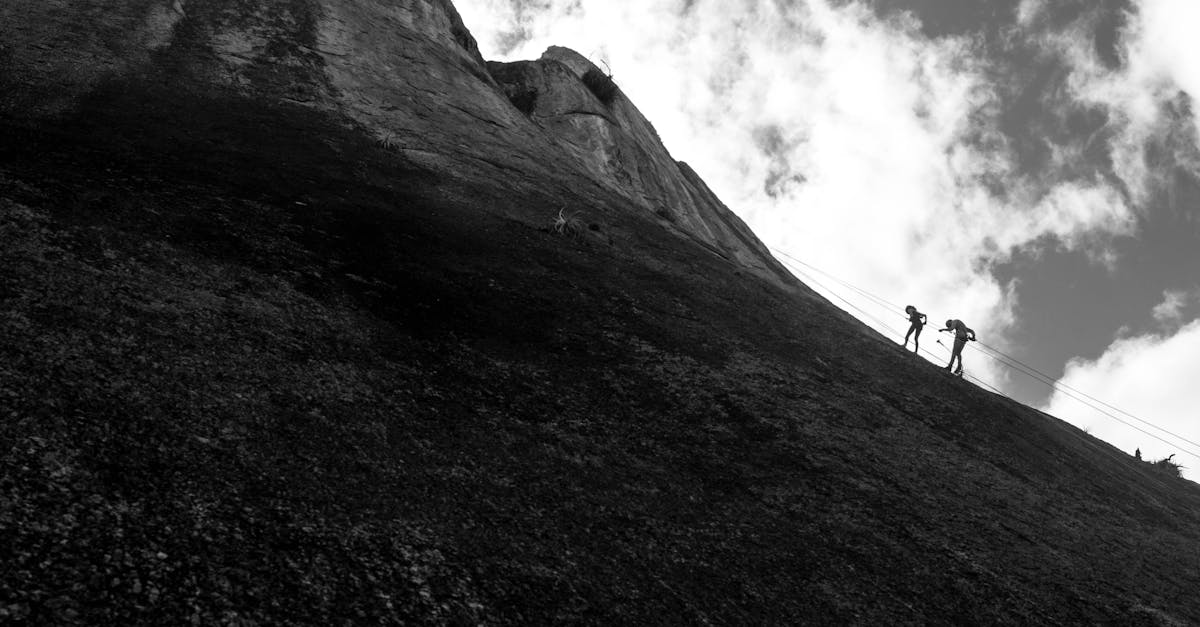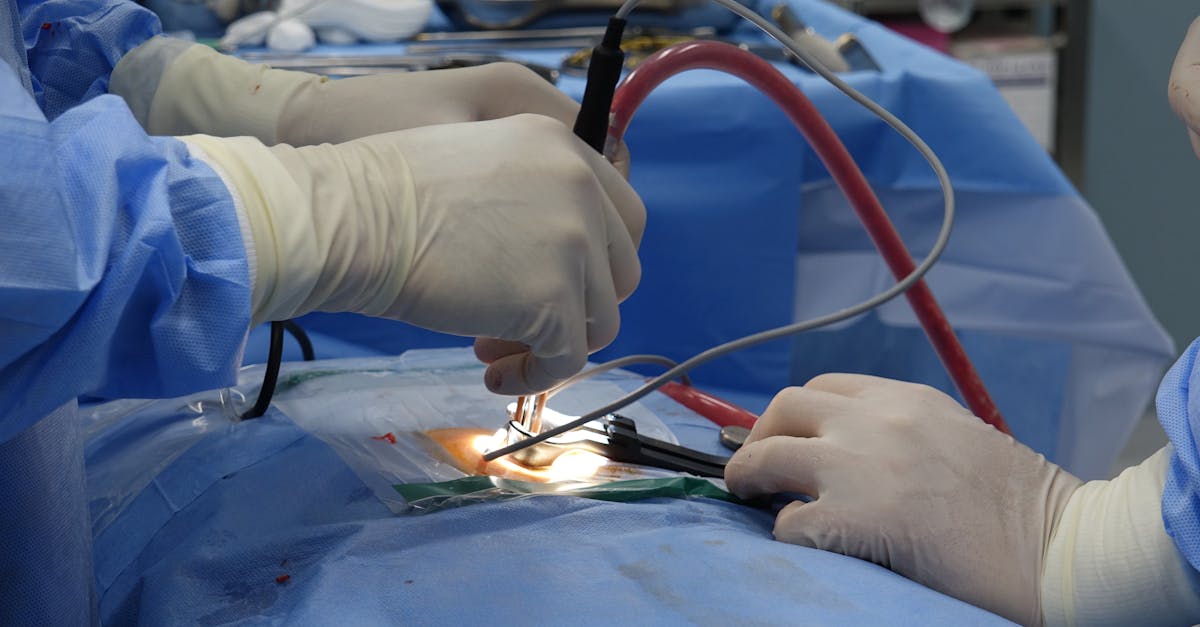Suffering from dizziness and balance problems? You’re not alone.
In Short: Dizziness stemming from conditions such as vertigo, *BPPV (benign paroxysmal positional vertigo)*, and vestibular neuritis can significantly disrupt your daily life. The Pulse Align technique offers effective strategies for managing dizziness and enhancing your balance. This innovative approach emphasizes gentle vertigo exercises and integrates natural remedies for dizziness and nausea to support a harmonious recovery. Experience the benefits of improved stability, reduced instances of dizziness and anxiety, and overall well-being with a focus on gentle postural recalibration. Ready to reclaim your health and wellness? Book your appointment today!
Are you struggling with lower back pain and poor posture?
Effective strategies for coping with vertigo through Pulse Align’s innovative techniques can illuminate the path to enhanced well-being. Many individuals experience dizziness due to various dizziness causes such as BPPV (benign paroxysmal positional vertigo), vestibular neuritis, and labyrinthitis. By incorporating vertigo exercises and dizziness home remedies, patients can not only address their symptoms but also improve their balance problems and mitigate conditions such as Meniere’s disease. With a focus on core strengthening and posture correction, the Pulse Align method effectively supports individuals struggling with dizziness and anxiety, ultimately guiding them toward a more stable and comfortable life.

For many individuals, navigating the challenges of vertigo can sometimes feel overwhelming, leaving them seeking effective strategies to improve their daily lives. At the heart of enhancing your well-being lies posture improvement and the principle of neuromuscular recalibration. By focusing on these fundamental aspects, you can embark on a journey toward a more balanced and fulfilling life.
The Pulse Align Approach
In addressing the various factors that influence dizziness and balance problems, it’s essential to understand the key concepts behind Pulse Align’s methods. Utilizing gentle stimulation, our techniques aim to recalibrate muscle tone while supporting your body’s natural processes. This holistic approach fosters a return to a state of balance and harmony, allowing clients to experience enhanced well-being without the need for invasive procedures.
Holistic Benefits of Pulse Align
Choosing a holistic path means embracing the body’s innate ability to heal itself. Pulse Align’s focus on promoting muscle tone symmetry encourages a sense of alignment and ease throughout the body. Clients often find that their comfort levels naturally improve as they engage in our corrective practices. This gentle approach paves the way for a more profound connection with one’s body, which is vital to overall health.
Client Experiences and Testimonials
Feedback from our clients illustrates the transformation they experience through Pulse Align’s methods. Many share their journeys of enhanced stability and improved posture naturally, which often translates to a greater confidence in their daily activities. For example, one client mentioned how the supportive environment of Pulse Align has aided in significantly reducing feelings of tension and discomfort.
Take Action Today
If you are ready to explore how to improve your well-being naturally, consider visiting the Pulse Align website to book a consultation at one of our clinics, including locations in Montreal, La Prairie, Terrebonne, Chicoutimi, Charlesbourg, Saint-Jérôme, Châteauguay, Sainte-Marie, Les Escoumins, Granby, and Panama City. Our services are family-friendly and suitable for clients of all ages, including children and pregnant individuals. Remember, while Pulse Align complements your wellness journey, it is important to maintain open communication with your healthcare team. Discover how Pulse Align can help guide you toward a naturally balanced life!
Medical Disclaimer: While Pulse Align supports overall wellness, it does not replace medical care. Clients are encouraged to work alongside their healthcare providers for ongoing medical conditions. Any relief experienced by our clients is attributed to the body’s natural ability to restore balance.
- Mindful Movement: Engage in activities like Tai Chi to enhance coordination.
- Core Strengthening: Perform exercises to improve overall balance and stability.
- Hydration: Maintain proper fluid intake to prevent dizziness.
- Postural Awareness: Focus on correcting posture to alleviate symptoms.
- Vestibular Rehabilitation: Develop tailored exercises that target unique balance challenges.
- Stress Management: Utilize relaxation techniques to manage anxiety linked to vertigo.
- Natural Remedies: Incorporate dietary adjustments that limit salt and caffeine intake.
- Expert Guidance: Consult with professionals for personalized treatment plans.

Vertigo is a distressing condition that can greatly affect one’s quality of life. Whether linked to ailments such as BPPV (benign paroxysmal positional vertigo), vestibular neuritis, or Meniere’s disease, or manifested as dizziness due to balance issues, effective strategies to manage these challenges are essential. This article delves into the innovative Pulse Align technique, focusing on enhancing neuromuscular health, improving posture, and fostering a holistic approach to achieve natural balance.
Understanding Vertigo and Its Causes
Vertigo often leads to overwhelming sensations of spinning or unsteadiness, resulting from multiple dizziness causes, such as labyrinthitis or dizziness after a head injury. Understanding these underlying conditions can help tailor effective treatment plans and manage debilitating symptoms. By embracing comprehensive methods like the Pulse Align technique, individuals can explore practical ways to alleviate their struggles.
Posture Correction for Enhanced Stability
Proper posture correction is beneficial for those experiencing vertigo. It mitigates unnecessary stress on the spine and nervous system, enhancing overall balance. Regularly practicing core strengthening exercises not only supports improved posture but also builds the foundation for maintaining stability. For instance, performing simple trunk exercises, such as standing on one leg or utilizing a resistance band, can significantly enhance balance over time.
Incorporating Trunk Exercises for Natural Balance
Incorporating trunk exercises into your daily routine can bring profound results in managing balance problems. Such activities enhance muscle strength and improve the body’s ability to coordinate movements. Simple exercises, like core strengthening drills, can serve as effective vertigo exercises that are easy to perform at home. Personalizing these practices to suit your level can accelerate recovery and promote dynamic stability.
Natural Remedies and Dizziness Home Remedies
Beyond structured exercises, natural remedies for dizziness and nausea can enhance one’s wellness journey. Staying adequately hydrated, alongside consuming a balanced diet, helps regulate bodily functions. Utilizing home remedies, such as ginger tea or peppermint, can offer relief from dizziness when standing up suddenly. By integrating these holistic approaches into daily routines, individuals can effectively combat their vertigo challenges.
Integrating the Pulse Align Technique
The Pulse Align technique emphasizes the innate ability of the body to recalibrate itself through gentle stimulation and alignment strategies. This method not only optimizes functional abilities but also promotes symmetry within the muscular system. By addressing issues related to dizziness and dizziness and anxiety, and fostering a community-driven environment, clients can experience tangible improvements in their overall health.
Take Action Towards Better Well-being
If you are seeking effective strategies to manage vertigo or balance problems, we encourage you to consider the Pulse Align approach. By prioritizing neuromuscular health and core strengthening, you can embark on a wellness journey that restores your sense of balance. To learn more about personalized exercise plans or to book your consultation at one of our clinics, please reach out to Pulse Align today.
| Strategy | Description |
|---|---|
| Neuromuscular Recalibration | A technique focusing on muscular balance to improve overall posture and stability. |
| Core Strengthening Exercises | Activities that enhance abdominal strength, contributing to better balance. |
| Posture Correction | Cultivating awareness of body positioning to reduce occurrences of dizziness. |
| Balance Exercises | Simple routines that promote stability and aid in adapting to sensory changes. |
| Hydration Management | Ensuring adequate fluid intake to support bodily functions and minimize dizziness. |
| Meditation and Relaxation | Utilizing mindfulness techniques to alleviate anxiety often associated with vertigo. |
| Personalized Consultation | Individual assessments that tailor strategies to each client’s unique needs. |

Transformative Wellness Journeys at Pulse Align
Clients from various regions have experienced the profound benefits of Pulse Align’s unique approach to managing vertigo. In La Prairie, many have highlighted the effectiveness of engaging with the Pulse Align technique, which empowers the body to recalibrate and restore balance naturally. With each session, individuals have reported feeling more centered and stable, significantly enhancing their quality of life.
Residents in Mont-Royal have shared inspiring stories of how the Pulse Align method aided in alleviating their dizziness and improving their overall wellness. By utilizing gentle, evidence-based strategies, clients have felt their body regain control over its natural rhythms, illustrating how holistic recovery can genuinely foster a sense of well-being.
In towns like Châteauguay and Sainte-Marie, clients have expressed gratitude for the supportive and nurturing environment offered by Pulse Align. Many report experiencing remarkable changes in their balance and body awareness, emphasizing the effectiveness of the wellness techniques utilized in their tailored programs. The clear focus on restorative practices has empowered these individuals to manage their symptoms more effectively.
Feedback from clients in Deux-Montagnes underscores the importance of addressing vertigo through a holistic lens. Many have found that the Pulse Align method complements their existing healthcare regimens, providing a well-rounded approach to wellness that promotes a more active lifestyle. This has resulted in impactful transformations, with numerous individuals experiencing a renewed sense of vitality as they navigate their journey towards enhanced health.
Local residents from Chicoutimi and Saint-Jérôme have embraced the Pulse Align approach, discovering how this innovative technique not only targets their vertigo symptoms but also supports overall bodily function. The integration of these strategies into their daily routines has played a crucial role in enhancing their daily experiences, leading to increased confidence in their movements.
To explore the benefits of Pulse Align and discover how it can be a part of your wellness journey, we encourage individuals in Terrebonne and Panama City to visit our clinics. At Pulse Align, we prioritize collaboration with healthcare teams to support clients and their families in achieving optimal health. You can learn more about our locations and schedule your consultation by visiting Our Clinics.
Relief from Dizziness and Vertigo
Struggling with dizziness and vertigo? You are not alone. The experience of vertigo can be overwhelming, often tied to conditions such as BPPV (benign paroxysmal positional vertigo), vestibular neuritis, or labyrinthitis. Fortunately, innovative strategies exist to manage these challenges.
Through targeted vertigo exercises and natural remedies for dizziness and nausea, one can take actionable steps to improve balance and alleviate the sensations of dizziness. By adopting these methods, individuals can reclaim their well-being and enjoy a more stable everyday life.
Explore Our Unique Offerings
If you find yourself grappling with balance issues, consider the Pulse Align Method. This approach is designed to equip individuals with effective strategies for mitigating the symptoms associated with dizziness. Many individuals endure various causes of dizziness, and fortunately, innovative treatments and at-home exercises are available to restore stability and foster comfort.
User-Centric Strategies
At Pulse Align, our approach focuses on gentle stimulation to support the body’s inherent processes, leading to improved muscle tone symmetry and enhanced posture. By addressing the core factors contributing to discomfort and imbalance, we assist clients in navigating their wellness journeys with greater ease.
Holistic Healing and Natural Benefits
Emphasizing a holistic perspective, Pulse Align highlights the body’s innate ability to heal. Our clients often experience a myriad of benefits from incorporating gentle techniques into their daily routines. Many report improved awareness of their bodies and increased confidence in their movements.
Client Experiences Inspire Transformation
Feedback from clients underscores the effectiveness of blending wellness approaches. Participants have shared feelings of empowerment and enhanced stability after engaging in Pulse Align’s programs. With an emphasis on posture correction and overall bodily harmony, our strategies enable clients to manage discomfort while embracing a more active lifestyle.
Our Mission
At Pulse Align, our mission is to deliver evidence-based, client-centered treatments that address the underlying causes of pain and dysfunction. By integrating advanced techniques and technologies, we strive to empower each person to take control of their health, ensuring a high standard of care, lasting relief, and an improved quality of life.
Unlock the benefits of our personalized approach and learn more about our services at www.pulsealign.com. To find a location near you, visit our locations.
Discover TAGMED’s Innovative Spinal Decompression Therapy for Chronic Pain Relief
At TAGMED, we offer advanced Spinal Decompression Therapy, a non-surgical solution particularly effective for addressing moderate-to-severe conditions such as herniated discs, bulging discs, and symptoms associated with spinal stenosis. This specialized technique works by gently reducing pressure on affected discs and nerves, enhancing mobility, alleviating pain, and supporting your body’s natural healing process. If you’ve reached a plateau with other therapies, it may be time to explore how TAGMED’s evidence-based approach can facilitate a return to your active and comfortable lifestyle.
Have you tried conventional treatments and still struggle with persistent back pain due to a severe disc condition?
TAGMED’s innovative technique, known as neurovertebral decompression, applies a controlled, progressive traction force to the spine. This method creates additional space between the vertebrae, reducing pressure on intervertebral discs and nerve roots. As a result, this therapy enhances fluid circulation in the targeted area crucial for optimal healing and lowers inflammation, providing a reliable, non-invasive solution for individuals grappling with chronic back pain and other related issues.
The specific benefits of TAGMED’s neurovertebral decompression are profound. By effectively alleviating chronic pain and symptoms linked to conditions such as herniated discs or spinal stenosis, the therapy helps in reducing the pressure on nerve structures and optimizing fluid circulation surrounding the discs. Many patients report accelerated recovery times and a substantial enhancement in their quality of life, making this approach a compelling choice for those seeking relief from persistent discomfort.
When compared to other commonly used treatments—which may include pain medications, corticosteroid injections, or traditional physiotherapy—TAGMED’s neurovertebral decompression technology stands out. It eliminates invasive procedures and minimizes medication-related risks, offering patients a potentially faster and safer path to recovery. This makes it an appealing alternative for individuals searching for evidence-based solutions to their chronic pain.
Real-world testimonials underscore the effectiveness of TAGMED’s therapy. Many patients have experienced significant improvements, with lasting pain relief and a quicker return to daily activities reported frequently. Their accounts demonstrate that patients can reduce their dependence on pharmaceuticals while enjoying the tangible benefits of this innovative treatment, showcasing the effectiveness of our approach.
Conclusion: Embrace Wellness with Pulse Align
If you’re navigating the challenges of vertigo and seeking effective strategies for coping, Pulse Align offers a holistic health approach that emphasizes posture correction and neuromuscular recalibration. Through gentle, non-invasive techniques, clients experience improved posture, reduced discomfort, and increased mobility, ultimately leading to an enhanced sense of well-being.
Clients consistently report positive experiences with Pulse Align, describing a nurturing environment that supports their journey toward wellness. This client-centric focus encourages individuals to embrace their unique path to recovery, fostering a space where they can explore the potential of their bodies to heal naturally.
Take action towards transforming your wellness journey today! Schedule your consultation now to discover how the Pulse Align difference can enhance your life. Visit our website to learn more about our services and how we can support you in achieving your health goals.

Do you suffer from a chronic condition that responds little or not at all to conservative treatments?
In the quest for overall wellness, many individuals find themselves seeking non-invasive, natural methods to support their bodies. At Pulse Align, we introduce an innovative method that helps restore the body’s natural balance and posture through gentle, imperceptible pulses. This unique approach not only promotes a sense of stability but also enhances muscle tone symmetry, which can lead to reduced tension and discomfort in everyday activities. By focusing on the body’s intrinsic ability to recalibrate, clients may discover a renewed sense of well-being without the need for traditional interventions.
It is essential to emphasize that Pulse Align does not directly address discomfort or conditions but rather assists the body in recalibrating itself. Our goal is to support clients in achieving improved alignment and comfort, which often results in remarkable improvements in posture and overall wellness. Clients frequently report a greater sense of ease, helping them navigate their daily lives with increased stability. This gentle, alternative method empowers individuals to embrace their health journey confidently.
What sets Pulse Align apart is our personalized approach towards client care. Many individuals have shared inspiring testimonials detailing their experiences in our wellness programs. Clients often express how the gentle sessions have helped alleviate neck tension, enhance flexibility, and restore comfort in their movements. This feedback highlights the positive impact Pulse Align has on individuals seeking harmony within their bodies, regardless of their unique backgrounds or wellness goals.
Interested in discovering how Pulse Align can support your wellness journey? We invite you to visit our website and explore our clinics located in cities such as La Prairie, Mont-Royal, Terrebonne, Chicoutimi, and Châteauguay. Here, you will find more information about our services, as well as accessible options for you and your family. It is important to note that while Pulse Align complements, it does not replace professional healthcare services. Our approach is designed to work hand-in-hand with your current wellness regime, enhancing your overall health journey.
Experience our safe, non-invasive, and family-friendly approach today! To learn more about our services and to book an appointment, visit our website: Pulse Align. Explore how our gentle yet effective techniques can guide you toward a more balanced and healthy future.
Frequently Asked Questions
Vértigo
Les problèmes de cou (cervicaux) causent-ils des vertiges ?
Des tensions cervicales peuvent contribuer à une sensation d’instabilité, mais les vertiges cervicogéniques purs sont moins fréquents.
Le café ou l’alcool aggravent-ils les vertiges ?
Une consommation excessive d’alcool ou de caféine peut aggraver les vertiges chez certaines personnes sensibles.
L’anxiété aggrave-t-elle les vertiges ?
Oui, la peur des vertiges peut créer un cercle vicieux, augmentant l’anxiété et la sensation d’instabilité.
Les femmes enceintes sont-elles plus sujettes aux vertiges ?
Oui, les changements hormonaux, la tension artérielle et la circulation sanguine peuvent causer des étourdissements ou des vertiges légers.
Is vestibular rehabilitation effective?
Yes, it retrains the balance system, helping compensate for inner ear dysfunction.
Does walking help reduce vertigo?
Careful, regular movement can help the brain adapt and improve balance over time.
Can neck muscle tension cause vertigo?
Extreme tension may affect blood flow and posture, contributing to a feeling of dizziness.
Do blood pressure medications cause vertigo?
Some antihypertensives lower blood pressure, causing lightheadedness when standing up.
Can diabetes cause vertigo?
Low blood sugar can cause dizziness, but that’s not true vertigo.
Quelle est la différence entre un vertige et un étourdissement ?
Le vertige implique une sensation de rotation, alors que l’étourdissement est un sentiment de faiblesse ou de tête légère sans sensation rotatoire.
Zoé Rousseau believes that knowledge is the most powerful step toward healing—and she’s here to illuminate the path forward for anyone facing the challenges of vertigo. At Pulse Align, Zoé not only highlights the latest breakthroughs in neuromodulation and non-invasive health technologies but also translates complex research into practical, everyday guidance. Her approach is grounded in empathy and fueled by a genuine drive to help readers find balance, both literally and figuratively. From exploring advanced treatments to sharing firsthand patient stories, Zoé’s heartfelt advocacy ensures that no one has to face the spinning world of vertigo alone.
Medical Disclaimer
The information and advice provided on this site do not replace the advice, diagnosis, or treatment of a healthcare professional. Please note that the author of this article is neither a doctor nor a specialist in a medical specialty as defined by the Collège des médecins du Québec. Manual medicine, functional medicine, and sports medicine as described on this site exclude any medical treatment or diagnosis made by a doctor or medical specialist. Always consult your doctor for any medical questions. For more details, please read our complete Legal Notice.




